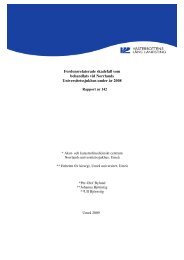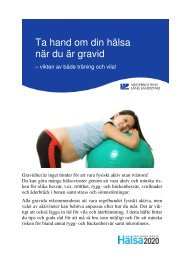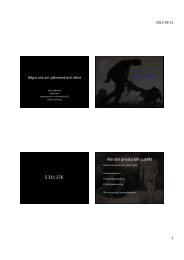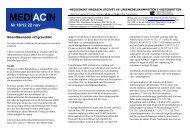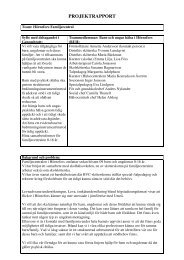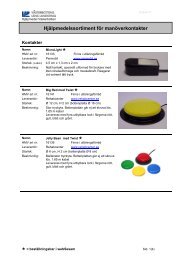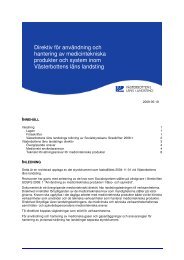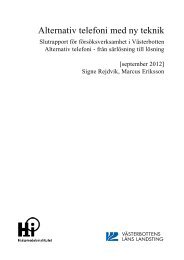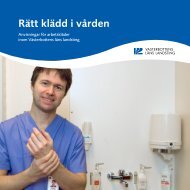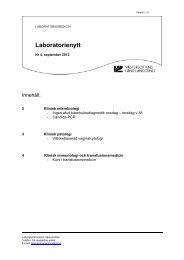An interventional approach to increase the intake of fruits and ...
An interventional approach to increase the intake of fruits and ...
An interventional approach to increase the intake of fruits and ...
Create successful ePaper yourself
Turn your PDF publications into a flip-book with our unique Google optimized e-Paper software.
2. Aims<br />
The aim which is applicable <strong>to</strong> this project is ‘<strong>to</strong> develop <strong>and</strong> evaluate a child health<br />
promoting intervention programme that builds on <strong>and</strong> complements current multidisciplinary<br />
activities supporting children <strong>and</strong> <strong>the</strong>ir parents, <strong>and</strong> while doing so considering a life course<br />
<strong>approach</strong> <strong>to</strong> health’ (1).<br />
3. Method<br />
3.1 Choice <strong>of</strong> method<br />
The project is based on <strong>the</strong> ‘GVO-model’ (9). This is a Dutch model used for methodological<br />
research regarding Health Promotion. Within <strong>the</strong> ‘GVO-model’ six phases are distinguished:<br />
1 epidemiological diagnosis, 2 causes <strong>of</strong> behaviour, 3 description <strong>of</strong> determinants, 4 design<br />
phase: <strong>the</strong> design <strong>of</strong> <strong>the</strong> intervention, 5 implementation phase <strong>and</strong> 6 evaluation. The first three<br />
phases <strong>of</strong> <strong>the</strong> GVO-model, which are focused on applied research, are executed in <strong>the</strong> study<br />
‘Fruit <strong>and</strong> vegetable <strong>intake</strong> in relation <strong>to</strong> health-related <strong>and</strong> socio-economic characteristics<br />
among parents-<strong>to</strong>-be in Västerbotten, Sweden’. The three last phases are described in this<br />
report. Behavioural models based on scientific research like ASE-model (10), stages <strong>of</strong><br />
change model (11) <strong>and</strong> I-change model (7) are used <strong>to</strong> declare <strong>the</strong> behaviour <strong>and</strong> <strong>the</strong><br />
behavioural determinants.<br />
3.2 Procedure<br />
The first phase in <strong>the</strong> GVO-model describes <strong>the</strong> public health regarding <strong>the</strong> fruit <strong>and</strong><br />
vegetable <strong>intake</strong> <strong>and</strong> health. The study started with a literature survey <strong>to</strong> get an insight <strong>of</strong> <strong>the</strong><br />
public health in Sweden focused on <strong>the</strong> fruit <strong>and</strong> vegetable <strong>intake</strong> <strong>and</strong> <strong>the</strong> possible risk <strong>of</strong><br />
developing health problems. Conclusions were drawn <strong>of</strong> <strong>the</strong> results <strong>of</strong> <strong>the</strong> study <strong>and</strong> based on<br />
those conclusions an intervention will be described. Magdalena Sundqvist, project leader <strong>of</strong><br />
<strong>the</strong> Salut programme, suggested an intervention at <strong>the</strong> open preschool ‘Klossen’ in Ålidhem,<br />
Umeå. Based on several visits at ‘Klossen’, including an <strong>intake</strong> interview <strong>and</strong> conversations<br />
with parents, <strong>the</strong> intervention was designed.<br />
4. Intervention<br />
The most considered obstacles when it comes <strong>to</strong> eating healthy foods were ‘lack <strong>of</strong> time’,<br />
‘irregular working hours’, ‘takes <strong>to</strong>o long <strong>to</strong> cook’, ‘family’s <strong>and</strong> friends’ choices’, ‘must give<br />
up food I like’, ‘healthy food is dull/less tempting’, ‘<strong>the</strong> price <strong>of</strong> healthy foods’ <strong>and</strong> ‘not<br />
enough cooking skills’. These obstacles can be subdivided in<strong>to</strong> different behavioural<br />
determinants as shown below (7,10):<br />
Barrier ‘lack <strong>of</strong> time’, ‘irregular working hours’, ‘takes <strong>to</strong>o long <strong>to</strong> cook’<br />
‘<strong>the</strong> price <strong>of</strong> healthy foods’<br />
Attitude ‘takes <strong>to</strong>o long <strong>to</strong> cook’, ‘must give up food I like’, ‘healthy food<br />
is dull/less tempting’<br />
Social influences ‘family’s or friends’ choices’<br />
Self efficacy ‘not enough cooking skills’<br />
The different behavioural determinants need <strong>the</strong>ir own <strong>approach</strong> <strong>to</strong> improve <strong>the</strong> behaviour <strong>of</strong><br />
<strong>the</strong> parents in Västerbotten (12). There must be anticipated on barriers <strong>and</strong> developing<br />
strategies <strong>to</strong> deal with <strong>the</strong> barriers which can be accomplished by doing, practice (role play,<br />
demonstration) <strong>and</strong> group discussions about potential problems. To influence <strong>the</strong> attitude <strong>of</strong><br />
6




